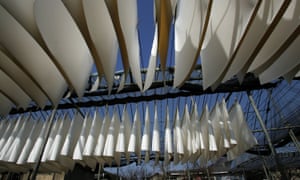
This well-bound romp through the back pages of civilisation is flawed but fascinating
Mark Kurlansky came to prominence with two books that took commonplace subjects and placed them at the centre of the universe. Cod, as one might have hoped for, was a biography of a fish. Kurlansky argued convincingly that cod had enjoyed a crucial role in trade and conflict, and he followed it up with a biography named Salt, which took a similar line and was no less entertaining. We are, alas, still waiting for his book entitled either Chips or Fries, but I for one refuse to give up hope.
There may be no limit to the amount of titles taking a bottom-up approach to history by making great claims for humble things. We have had whole books on the pencil, bananas, foam (as in shaving and beer), pepper and, of all crazy things, the colour mauve, the last of which was written by me. And now Kurlansky brings us Paper, which is a very different beast indeed.
I longed for some journalistic legwork. Too much of the time it’s one bit of damn paper after another
Paper didn’t just “change the world” as many of the other single-subject books argue. Paper, says Kurlansky, was the world. Paper has tracked and accelerated civilisation like nothing else, enabling communication, germinating ideas, logging trade, documenting history. The author uses paper to write about two millennia of intellectual and cultural advance, cramming so much in that his far-reaching reference points are both impressive and slightly destabilising. Rather than clarifying our thoughts on the subject Kurlansky explodes them, paper as confetti, the subject scattered into a hundred little pieces.

The real thing: handmade paper drying in the sun, South Korea. Photograph: Chung Sung-jun/Getty Images
His main problem is that paper is not a pliant or obliging character. “Exactly how paper was conceived of is a mystery,” he states, a flattening start. Much of the time his subject is less the history of paper than the spread of language and printing – paper as its own document. The journey begins in China around AD120, but we are soon in Spain in AD900 and then 15th-century Italy and Germany. Not long afterwards, Hernán Cortés colonises Mexico, Rembrandt discovers etching, graphite pencils are on sale in London and Thomas Bewick starts engraving on wood. Kurlansky moves from music notation to clocks to compasses in the space of a few pages, and we find ourselves in Picasso’s studio by way of the lithograph. Toilet paper makes a fleeting appearance, but not, unless I missed it in the rush, cigarette paper. Fascinating as it is to discover that the Japanese used paper balloon bombs in the second world war, you may become dizzy with the encyclopedic riff of it all.
The author is good on the roles paper played in the accounting of trade and the dissemination of religion. He is clear on the transition from rags to wood pulp, and engaging on the environmental pressures that led to products such as bagasse (a paper derived from the fibrous pulp waste of sugar cane). He has a clear appreciation of fine Japanese paper, though is less comfortable in the era of early western printing, where he writes of “ripping up” the pages of type composed by Gutenberg – tricky with huge blocks of cast metal.
But with so many brief narratives and very little personal engagement from the author (he doesn’t appear to travel much in pursuit of his stories beyond the library and the internet), I longed for some journalistic legwork to enliven the approach and forestall the reductionism. Too much of the time, it’s just one bit of damn paper after another.
Kurlansky’s book is published with a deckle edge finish, a process that replaces the regular clean-cut trim of a page with a jagged, pulped roughness. Once, such a finish was standard, the result of making paper by hand using a deckle frame, but now it’s an “authentic” taste and design choice, like pour-over coffee. It is a beautiful thing to hold and feel, and it presents a fine argument for the retention of paper as an aesthetically lusty object, let alone one that’s thrived through centuries of change. For contrast I read the last quarter of the book on my Kindle, which was handy but wholly unsatisfying (I should say still wholly unsatisfying: I’ve been sporadically reading ebooks for five years now, usually late at night or early morning, and I receive about half the pleasure I get from reading the same words on a page).
Son of cod...
Mark Kurlansky follows his bestselling history of the codfish with the stylish and learned Salt. How long will we have to wait before we get a history of vinegar?
Kurlansky’s conclusion is solid and hopeful. He concludes that paper will outlast us all: it is cheap, reliable, transportable and ultimately pleasurable. We haven’t quite achieved that super-efficient and bizarre goal of the paperless office, and perhaps we never will. Not that filing cabinets and photocopiers won’t soon go the way of the fax, but our desire to express ourselves instinctively still works best on the back of an envelope. We trust paper like we trust almost nothing else. Newspaper print runs diminish, but the romance of the brush and pen on a woven texture are resonant cultural requirements rather than nostalgic artefacts. And of course we are still printing, reading and reviewing books.
This particularly well-bound example was published just after the emergence of the Apple Pencil, which attempts to treat the iPad like, well, a pad, rather than the glass and microchip wonder it is. The new Pencil, like other electronic implements before it, allows you to draw and write on the screen, but the more it claims to accurately replicate the experience of writing on paper, the more it surely represents defeat.
No comments:
Post a Comment